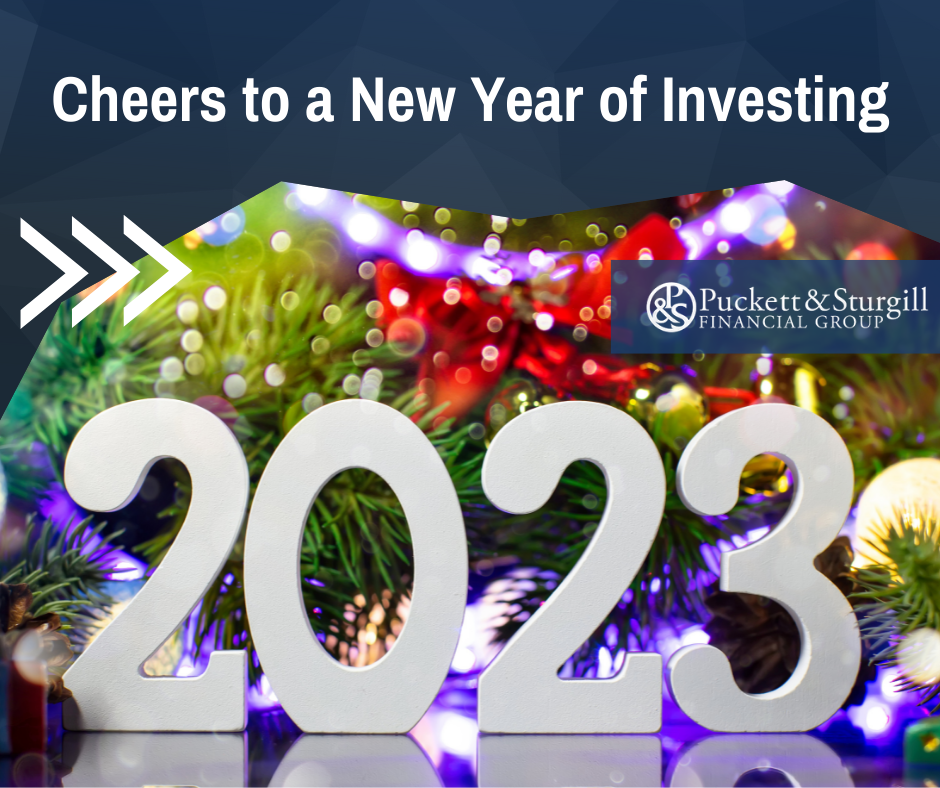Cheers to a New Year of Investing

For many investors, 2022 was a wild ride—with interest rate increases, a crypto implosion, and whipsawing values in the major market indices. It might be tough to catch one’s breath and look ahead to next year. But the beginning of the year is the perfect time to take stock of your investments, evaluating what worked, what didn’t, and what you might do better next year. Here are four key opportunities to consider that may recharge and reset your finances as you enter the new year.
Review and Refresh Your Financial Plan
If you set goals for the past year, evaluate your progress. Did you spend more than expected? Save less than expected? Or did you manage your goals easily—suggesting a bigger challenge may be appropriate for next year?
While setting financial goals for next year, you might also consider the long-term. When do you plan to retire? What do you need to see before getting there—a specific number in your 401(k), a paid-off balance sheet, or something else? Should you stay in your home or downsize? The answers to these questions may help you formulate a more solid plan.
Assess Your Retirement Readiness
Are you on schedule to retire? Are you contributing enough to your 401(k) or IRA?
Though the answers to those questions depend on each person’s circumstances, some patterns are emerging in savings habits among those in their 20s, 30s, 40s, 50s, and beyond. Check these numbers to see whether you are on track.1
Age 20 to 29
Average 401(k) balance of $10,500 while contributing 7% of income
Age 30 to 39
Average 401(k) balance of $38,400 while contributing 8% of income
Age 40 to 49
Average 401(k) balance of $93,400 while contributing 8% of income
Age 50 to 59
Average 401(k) balance of $160,000 while contributing 10% of income
Age 60 to 69
Average 401(k) balance of $182,100 while contributing 11% of income
Age 70 to 79
Average 401(k) balance of $171,400 while contributing 12% of income
These numbers are simply averages—they do not account for income, sector, or cost of living. They also do not include assets in individual retirement accounts (IRAs), taxable accounts, or other savings accounts. But knowing what those in your general age bracket save, on average, might give you a better idea of your progress toward retirement savings.
You should notice that as workers grow older, they tend to contribute a greater percentage of their total income to retirement.
Pay Down High-Interest Debts
With interest rates continuing to rise, credit cards, home equity lines of credit, and other variable-rate loans are likely to grow more expensive.2 If you have any adjustable-rate loans, now is a good time to begin paying them off more aggressively.
Calculate Your Cash Reserves
It is a good idea to have some cash held for emergencies during turbulent times. From an unexpected medical bill to a new appliance, having cash on hand may help avoid the stress of paying for sudden expenses. Assessing your cash reserves at the beginning of the new year may give you a good baseline for setting cash accumulation goals.
Important Disclosures:
The opinions voiced in this material are for general information only and are not intended to provide specific advice or recommendations for any individual.
All information is believed to be from reliable sources; however LPL Financial makes no representation as to its completeness or accuracy.
This article was prepared by WriterAccess.
LPL Tracking # 1-05337697.
Footnotes:
1 The Average 401(k) Balance by Age, Investopedia,
https://www.investopedia.com/articles/personal-finance/010616/whats-average-401k-balance-age.asp
2 What Rising Interest Rates Mean For You, CNN,
https://www.cnn.com/2022/09/21/success/what-rising-interest-rates-mean-credit-mortgage/index.html


